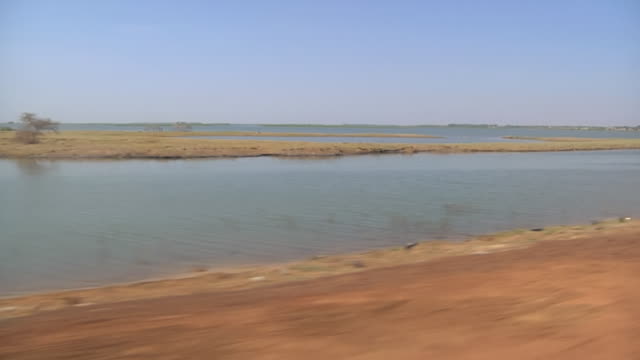Niger River Basin biodiversity

The Niger River, often referred to as the lifeline of the Sahel, is not just a crucial waterway that sustains millions of people in West Africa. It is also a region known for its incredible biodiversity and unique ecosystems. In this blog post, we will delve into the reasons why the Niger River Basin is celebrated for its natural wealth and the importance of preserving this invaluable resource.
The Rich Biodiversity of the Niger River Basin:Aquatic Diversity:
The Niger River and its numerous tributaries are home to a staggering variety of aquatic species. From the elusive West African manatee to the iconic Nile crocodile, the river teems with life. Fish, in particular, are a vital source of sustenance for local communities, with over 250 species found in the basin.
Avian Wonders:
The Niger River Basin is a paradise for birdwatchers. Over 400 bird species have been documented here, including the striking African fish eagle, the vibrant violet turaco, and the secretive African finfoot. Many of these species are migratory, making the basin a crucial stopover point during their journeys.
Mammals of the Sahel:
The river and its surrounding wetlands support a diverse range of mammals. Besides the aforementioned manatee and crocodile, the basin is inhabited by hippos, various antelope species, and the critically endangered West African lion. These animals contribute to the rich tapestry of life in the region.
Unique Ecosystems of the Niger River Basin:
Inland Delta of the Niger:
One of the most unique features of the Niger River Basin is the Inland Delta of the Niger. This expansive wetland ecosystem undergoes dramatic seasonal changes, with the river’s floodwaters spreading across the landscape during the rainy season and then receding, leaving fertile land behind. This dynamic environment supports an abundance of wildlife and provides crucial grazing grounds for both domestic and wild herbivores.
Floodplains and Marshes:
The annual flooding of the Niger River creates fertile floodplains and marshes that are rich in nutrients. These areas are essential for agriculture, supporting crops such as rice and millet. They also play a critical role in filtering water and regulating nutrient cycles.
Riparian Forests:
The river’s banks are lined with lush riparian forests that provide habitat for numerous species and act as corridors for wildlife movement. These forests are not only important for biodiversity but also help in mitigating erosion and regulating water flow.
The Challenges of Conservation:
While the Niger River Basin is a treasure trove of biodiversity and unique ecosystems, it faces various conservation challenges:
Habitat Loss:
Human activities, including agriculture and urbanization, have led to the loss and fragmentation of habitats. This threatens the survival of many species, particularly those with specific habitat requirements.
Pollution:
Industrial and agricultural runoff, as well as untreated sewage, pose a significant threat to water quality. Pollution can harm aquatic life and disrupt the delicate balance of ecosystems.
Climate Change:
Climate change is altering the patterns of rainfall and flooding in the region, impacting both wildlife and local communities. Adaptation strategies are crucial for maintaining the basin’s resilience.
Overexploitation:
Overfishing and unsustainable hunting practices can deplete populations of key species. Sustainable management of resources is essential for long-term conservation.
Preserving the Niger River Basin’s Biodiversity:
Efforts to conserve the biodiversity and ecosystems of the Niger River Basin are vital. These initiatives include:
Protected Areas:
Establishing and maintaining protected areas can safeguard critical habitats and allow species to thrive undisturbed.
Sustainable Resource Management:
Promoting sustainable fishing and hunting practices ensures that local communities can continue to rely on the basin’s resources while conserving them for future generations.
Conservation Education:
Raising awareness about the importance of biodiversity and ecosystems is crucial for garnering support for conservation efforts.
Climate Resilience:
Developing strategies to address the impacts of climate change is essential for preserving the basin’s unique ecosystems.
Conclusion:
The Niger River Basin stands as a testament to the remarkable diversity of life that can flourish in a river’s embrace. From its aquatic wonders to its vibrant avian populations and unique ecosystems, this region is a true natural jewel. Preserving its biodiversity and ecosystems is not just a matter of ecological significance but also a commitment to the well-being of the communities that rely on this life-giving river.
In the face of numerous challenges, concerted efforts in conservation, sustainable resource management, and climate resilience are key to ensuring that the Niger River Basin continues to thrive as a haven of biodiversity and unique ecosystems.




